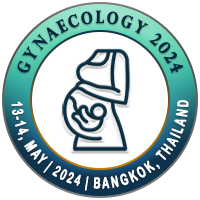
Charu Jandial
Southend Fertility and IVF, IndiaTitle: Ovarian sensitivity index -a novel marker of ovarian responsiveness in IVF cycles
Abstract
Study question - To validate the use of OSI as a measure of ovarian response during IVF cycles by correlating it with the other measures of ovarian response which included age, AMH, AFC, total dose of gonadotropins and quality of embryos.
Summary answer- OSI can be used as a dynamic marker for ovarian reserve, a guide for gonadotropin dose in future IVF cycles and a predictor of good quality embryos.
What is known already - Ovarian stimulation is an integral part of IVF and aims at producing adequate no of oocytes without increasing the risk of ovarian hyperstimulation syndrome. In Controlled Ovarian Stimulation, different women respond differently to similar doses of exogenous gonadotropins. Preliminary studies have suggested that a threshold level of gonadotropins may exist and no more competent oocytes can be obtained if exceeded. Recent studies, on the contrary, indicate that a high ovarian response to gonadotropins is not so detrimental. The key point is, not the gonadotropin dose or ovarian response alone, but a combination of these two, is important. This is the concept addressed in the ovarian sensitivity index. High OSI means, more oocytes are retrieved with fewer gonadotropin doses and offers the best pregnancy outcomes.
Study design, size, duration – This is a retrospective, single centre study which included 256 women over a period of one year.
Participants, materials, settings, methods - A Retrospective analysis conducted at Southend Fertility and IVF centre which included 256 women with age < 42 years, no previous history of ovarian surgery, chemotherapy/ radiation and had no evidence of endocrine disorders. A baseline scan was done in all the subjects to determine the antral follicle count. Subjects were treated with either long agonist or antagonist protocol as per the clinical and biochemical markers. Trigger injection was given when 3 or more follicles reached 18mm diameter. TVS guided OPU was done 36 hours later. Ovarian sensitivity Index was calculated and correlated with age, AMH, AFC, Total dose of Gonadotropins and top quality embryos.
Main results and the role of chance – Out of 256 women enrolled in the study with a mean age of 32 years,175(68.36%) were a case of primary subfertility with an average duration of 4 years.208 women received antagonist protocol. Mean number of oocytes retrieved were 8. Statistical analysis as per Pearson’s Correlation Coefficient showed a negative correlation of OSI with age and positive correlation with AMH and AFC (p value-0.0000). Positive correlation (0.8162,p value 0.000) was observed with number of oocytes recovered and top quality embryos (0.4 and 0.3,p values 0.0000 and 0.0000 respectively. Further analysis of data revealed that as OSI increases the mean number of top quality embryos increases.
Limitations, reasons for caution - A retrospective analysis, single centre, smaller group and includes patients with different protocols.
Wider implications of the findings - In failed IVF/ ICSI cycles, the management of future cycle can be guided by OSI. Patients with Higher values should receive same dose of FSH in future cycles while those with low OSI should receive higher dose of FSH, along with possibly considering other strategies to boost the ovarian response like change of protocol, addition of LH and use of DHEA. OSI can be used as a predictor of good quality embryos.
Trial registration number - Not applicable.
Biography
WILL BE UPDATED SOON

